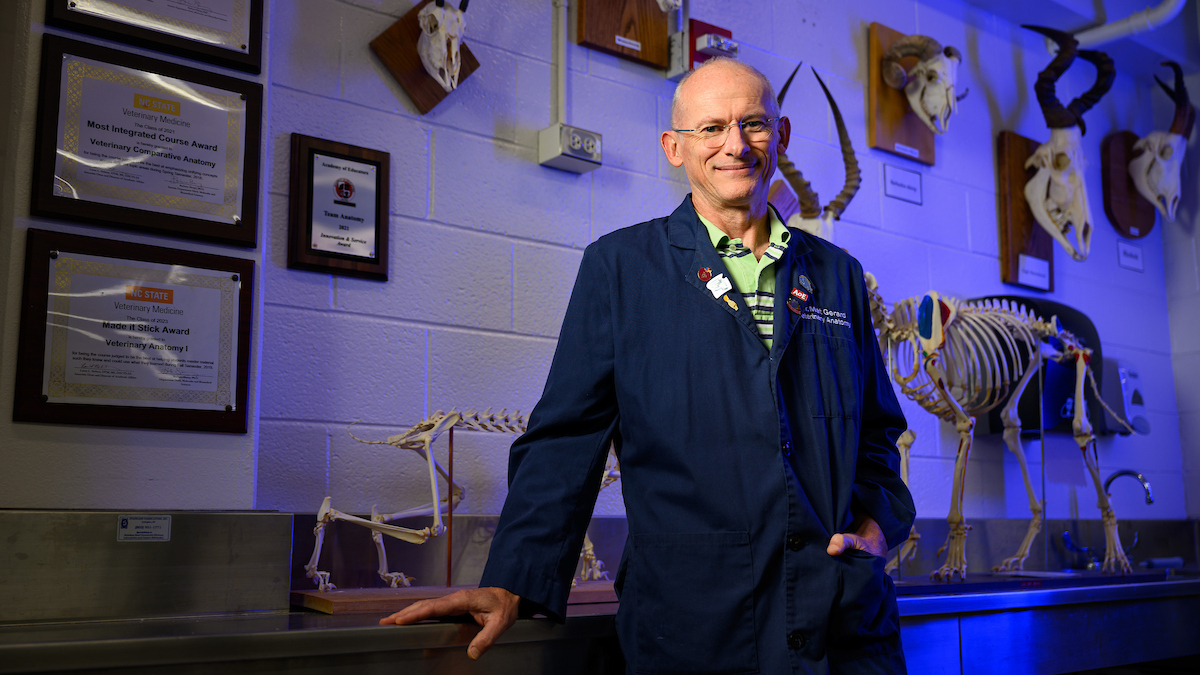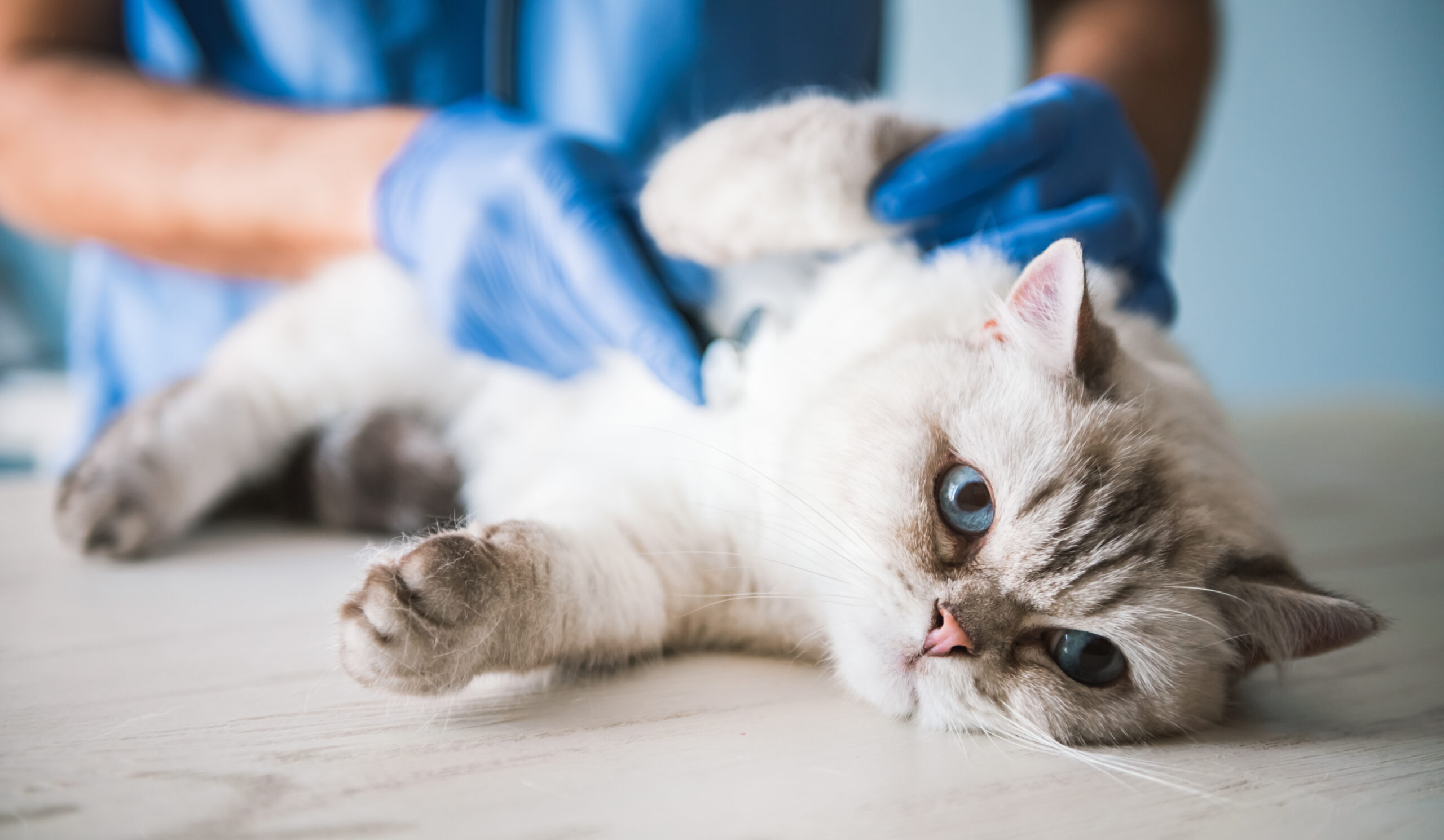40 Years Later: Looking Back on the Very First Day at the CVM
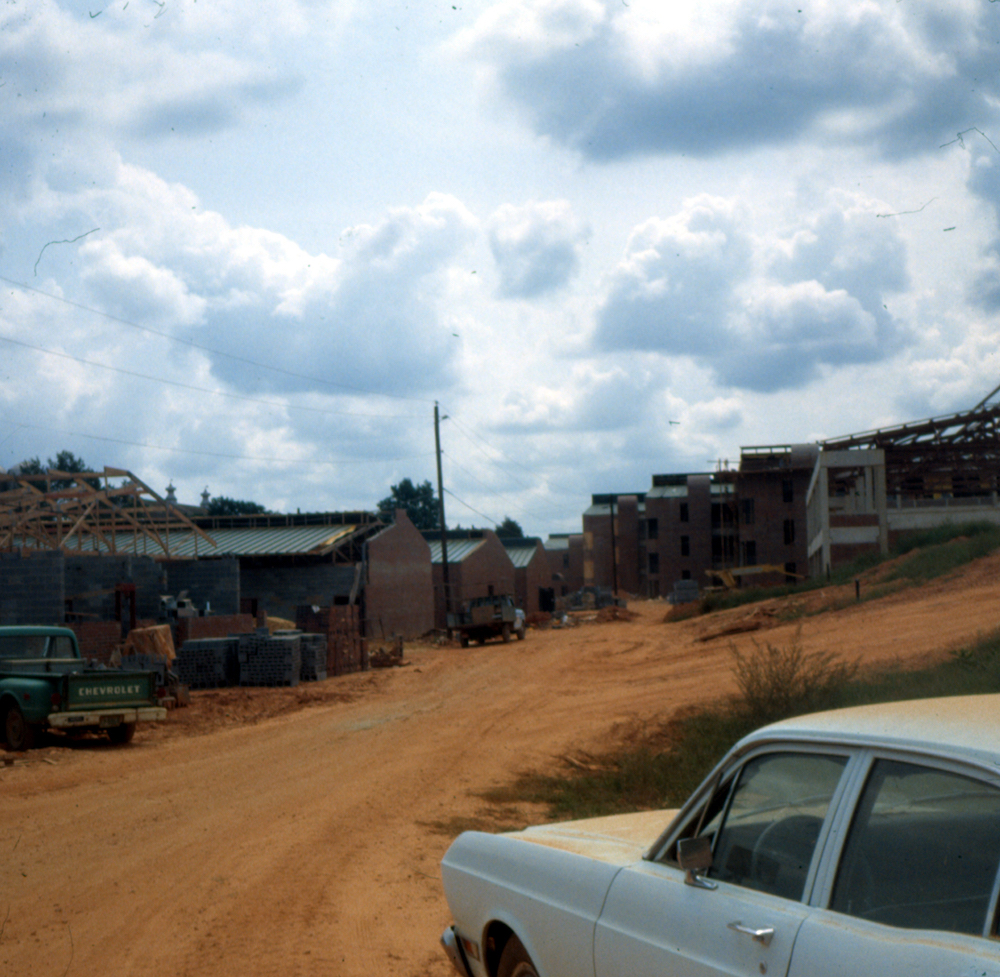
On Aug. 27, 1981, two years after construction began on the NC State College of Veterinary Medicine — and more than a year before the buildings were actually completed — the first group of 40 pioneering students began their DVM training surrounded by mud and construction crews.
The very first veterinary classroom for the initial 20 men and 20 women to enter the CVM was held in a cow barn. Four years later, they became the class of 1985.
On the 40th anniversary of the first day of CVM classes, we asked four of the college’s first students — Randy Jones, David Rives, Patricia Rynders and Mark Thompson — to give us a behind-the-scenes look at that momentous day.
The NC State School of Veterinary Medicine (as it was called in 1981) was established in 1979 after years of planning. A groundbreaking was held in the crisp snow and ice in January 1980. Soon, a group of students was applying to launch their careers in veterinary medicine.
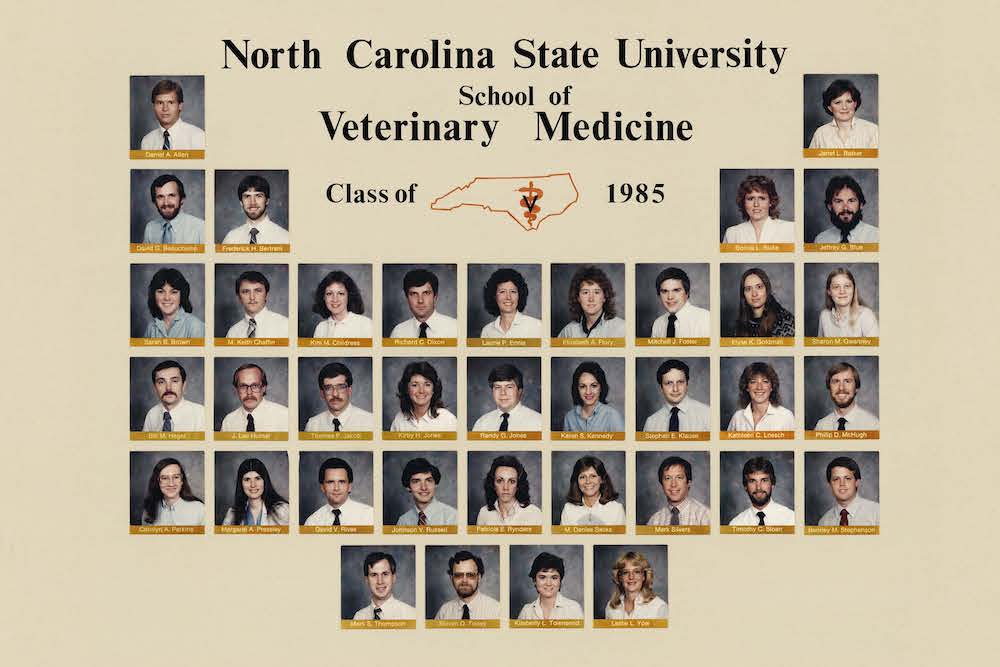
Rives: As an undergraduate at UNC-Chapel Hill, I was encouraged by some friends to join them in applying to dental school. It did not take long for me to realize dentistry was not the path for me. I completed the first year and received my B.S. in Dentistry. I then withdrew from dental school and began exploring my options in veterinary medicine.
North Carolina was at that time operating under a contract system with Auburn, Tuskegee and Ohio State to accept students into their veterinary programs. I applied through this process for two years but to no avail. Apparently, dropping out of one professional curriculum is not viewed favorably by another.
Jones: I applied as a junior to the out-of-state schools that North Carolina had contracts with. I was not accepted. My senior year was the first year NC State University took applications. I applied and was miraculously accepted. To say I was excited is an understatement.
Rynders: I grew up in Raleigh and attended NC State for my undergraduate degree. Plans for a veterinary school had been underway for a number of years and luckily the acceptance of the first class coincided with my eligibility to apply.
Thompson: My family moved from Vermont to North Carolina in 1979, and I transferred from the University of Vermont to NC State for the last two years of my bachelor’s degree. I was thrilled to be accepted to the first class. I had considered applying to Cornell … but after visiting there I decided NC State would be a better fit for me.
Rives: I accepted a research technician position in the NC State University Department of Poultry Science in 1979. This exposure laid the groundwork for my career and bolstered my application for admission to the first class. I remember a tremendous feeling of relief when I received my acceptance letter. I hand-delivered my response to the admissions office the next day.
Orientation wasn’t nearly as detailed as it is today. To the first students, it felt a little improvised.
Rives: I remember orientation being held outside the main entrance. Even though the building wasn’t ready, I was.
Thompson: We met on the grand brick walkways that led us to a chained and locked door. That’s when we realized that the building wasn’t finished. There we were all dressed up, 40 of us, with literally no place to go. We met with local media, took some pictures, and then we were bussed to the state fairgrounds for an orientation that I don’t remember.
Rynders: Orientation was in the Jim Graham Building at the fairgrounds. I remember wondering that evening what I had gotten myself into and whether I was going to be able to handle an 8-point grade scale versus the 10-point scale the rest of campus used.
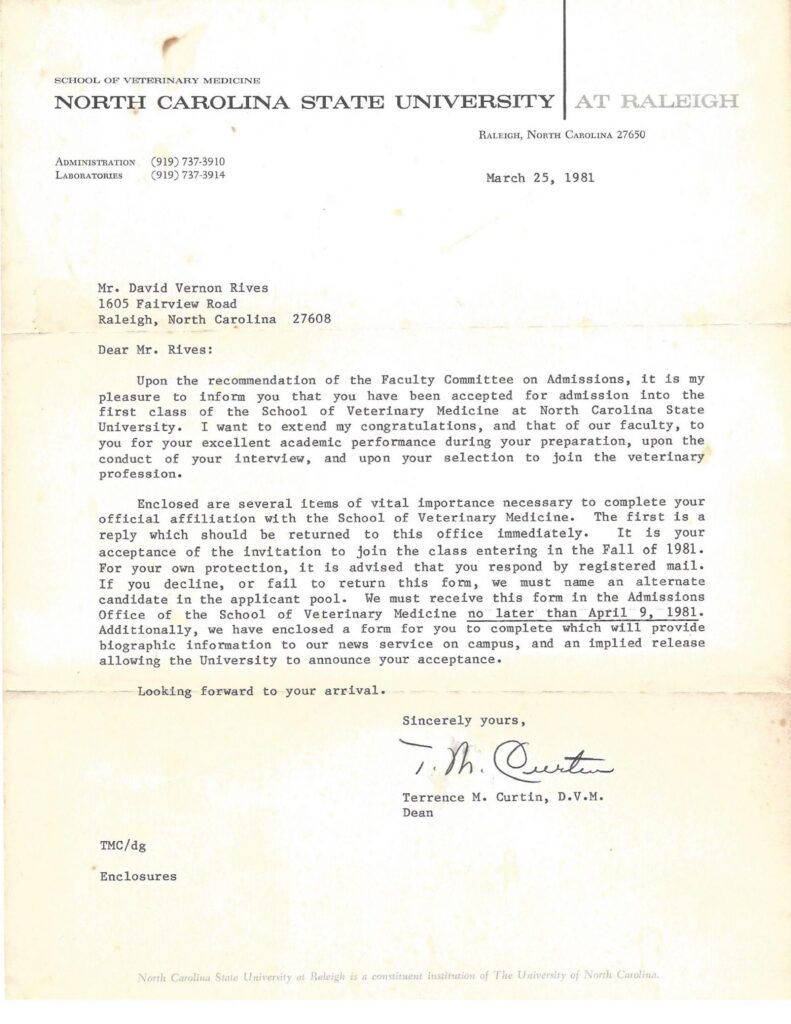
Despite the fact that construction was still ongoing, the first day of classes was held primarily outdoors and in completed areas inside.
“There were no desks, no air-conditioning, no showers and no lockers,” according to an article in an SVM-produced newspaper promoting the first Open House in 1983. “Sporting university-issued fly swatters, they tracked through the red clay mud juggling books, chairs and microscopes from class to class.”
The library was open but it had no chairs or tables as the first class began.
Rives: We were all excited to get started, even though our first class was to be held in a “finger barn” intended to house research animals. I guess we were guinea pigs of sorts.
Rynders: It rained that day, and I was so nervous and excited that I left my headlights on when I parked my car. I was mortified that the first impression my classmates would have of me was that of the dummy who left her lights on. It turned out that I should not have worried because I wasn’t the only one. What at first seemed like an embarrassment turned out to be a great ice breaker.
Thompson: We would spend the majority of our first year at the finger barn. Every day we parked our cars in the lot and then walked around the construction site carrying our books and microscopes and coveralls and boots to our tiny finger barn.
Jones: The instructor, Dr. Ben Harrington, arrived but the door was locked and no one had a key.
Rives: He wound up teaching the class outside.
The CVM’s construction would not be completed until December 1982, and by that time another class of 40 students had joined campus. Even anatomy would be taught in the finger barn, until it moved completely into the main building in April 1982.
In the meantime, the CVM became, at the time, one of the few veterinary schools in the country to become fully accredited before the graduation of its first class.
Rynders: I remember the sense that although the program and facility weren’t really ready for the first class, we adjusted to the situation, made the necessary sacrifices and became successful nonetheless. We truly were pioneers.
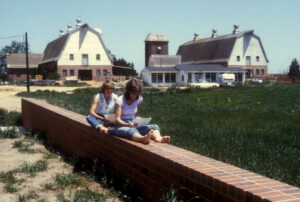
Thompson: We walked through dust or mud depending on the weather and then endeavored to learn with a background symphony of construction equipment and workers. We had one unisex bathroom for all of us so we shared the portable toilets with construction workers.
Jones: A lot of effort was made by the administration and faculty to be sure we received a great education. Because the faculty was not complete we were taught by some of the deans and other renowned instructors that were brought in for certain topics. In the end, we were blessed to have been well-educated.
Thompson: What I remember most is the bond we had with each other, the faculty and the staff. There were so few of us at first that we developed a closeness that most vet students could never expect. We even had a pop-up wine and cheese party every Friday for both faculty and students that somehow persisted throughout the four years.
At 7 p.m. May 10, 1985, 37 members of the CVM class of 1985 graduated during the college’s first Oath and Hooding ceremony.
Thompson gave the student address, and Rives received the first diploma because he was the first student to be accepted.
After the ceremony, the group returned to the finger barn, where it all began, to celebrate.
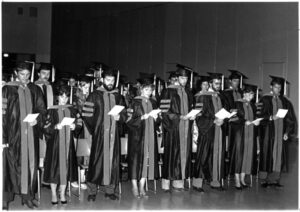
Rynders: The CVM shaped everything about my professional life and life today. I am the attending veterinarian at a university with a veterinary school. The standards I apply in my role here are based on the values, work ethic and dedication to task that I experienced as a veterinary student at NC State.
Rives: The things I remember the most about my time in vet school are the incredible people I met there and the amazing things we were able to do — something new every day. One of my favorite things to do in my current position with Zoetis Animal Health is to come back to the CVM and help with poultry classes and work with the residents.
Thompson: We had great mentors. They did a great job of recruiting talented faculty to this new school. The process of going to veterinary school as it was built around us helped us to become resilient and uniquely prepared us for our future in the industry.
~Jordan Bartel/NC State Veterinary Medicine
After Graduation: Where Are They Now?
Randy Jones: Jones accepted a position at Riverbank Animal Hospital in Kinston, where he practiced for 10 years. He began his own swine consulting practice in 1995, Livestock Veterinary Services PLLC, and opened a small animal clinic in 2013 with his partner, Cary Sexton. He still works in both practices and lives on a farm in Greene County.
Patricia Rynders: Rynders was in animal practice for eight years before earning a master’s degree. She joined the laboratory animal program at the Auburn University College of Veterinary Medicine, where she is now the attending veterinarian and director of the Division of Laboratory Animal Health. She lives in Auburn, Alabama, with her husband, Michael Tillson, who graduated from the NC State CVM in 1988 Tillson is a small animal soft tissue surgeon at Auburn.
David Rives: Rives completed an avian medicine internship at NC State, became a technical services veterinarian with Intervet, then returned to NC State as an extension veterinarian in the Department of Poultry Science. In 1995, he started work as a veterinarian for the turkey division of Prestage Farms. Since 2015, he has been a senior technical services veterinarian for Zoetis. He lives in Mount Airy.
Mark Thompson: Thompson worked for a year in mixed practice in Tennessee doing cattle, horse, and companion animal work. After working in mixed practice in North Carolina for nine years, he focused on companion animal medicine. He joined the University of Missouri College of Veterinary Medicine for three years to run its small animal community practice program. He then took a position as a small animal practitioner at Brevard Animal Hospital, bought the practice five years later and still practices there. He’s the author of the reference book Small Animal Medical Differential Diagnosis. His future wife, Sandi, was one of the first two technicians hired by the NC State CVM.

